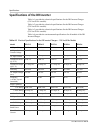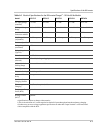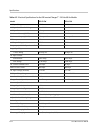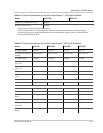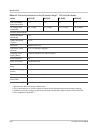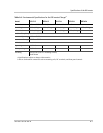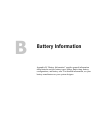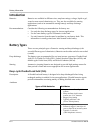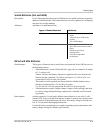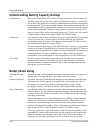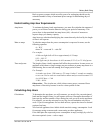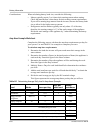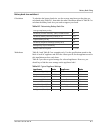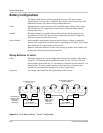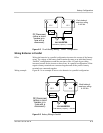
Battery Information
B–2 975-0012-01-02 Rev A
Introduction
Batteries Batteries are available in different sizes, amp-hour ratings, voltage, liquid or gel,
vented or non-vented, chemistries, etc. They are also available for starting
applications (such as an automobile starting battery) and deep discharge
applications.
Recommendations Consider the following recommendations for battery use.
• Use only the deep discharge types for inverter applications.
• Use the same battery type for all batteries in the bank.
• Use only batteries from the same lot and date in your battery bank. This
information is usually printed on a label located on the battery.
Battery Types
There are two principal types of batteries: starting and deep-discharge (with
several different types of chemistries). Batteries can be either sealed or non-sealed
(vented).
Deep discharge The battery types recommended for use in an inverter system are: Flooded Lead
Acid (FLA), Sealed Gel Cells (GEL), Sealed Absorbed Glass Mat (AGM); and
alkaline types Nickel-iron (NiFe) and Nickel-Cadmium (NiCad).
Starting Automotive (starting) batteries are designed to provide high starting current for
short periods of time and are not appropriate for inverter applications.
Deep-cycle Flooded Lead Acid (FLA)
Description A flooded lead acid battery is designed to be deep-discharged before being
recharged, making it suitable for inverter applications. Flooded batteries require
periodic maintenance consisting mainly of adding distilled water to the cells.
Attributes
Types of FLA Batteries Attributes
Golf Cart • Popular for smaller off-grid home
systems
• Many medium sized inverter
systems use “L16” batteries
• Rugged, long lasting
• Typically rated at 6 volts
(220 to 350 amp hours)
Industrial (electric forklift) • Popular in large inverter systems
• Extremely rugged - lasts up to 10
years or more in an inverter system
• Typically 2 volt cells
(1,000 amp hours or more)



